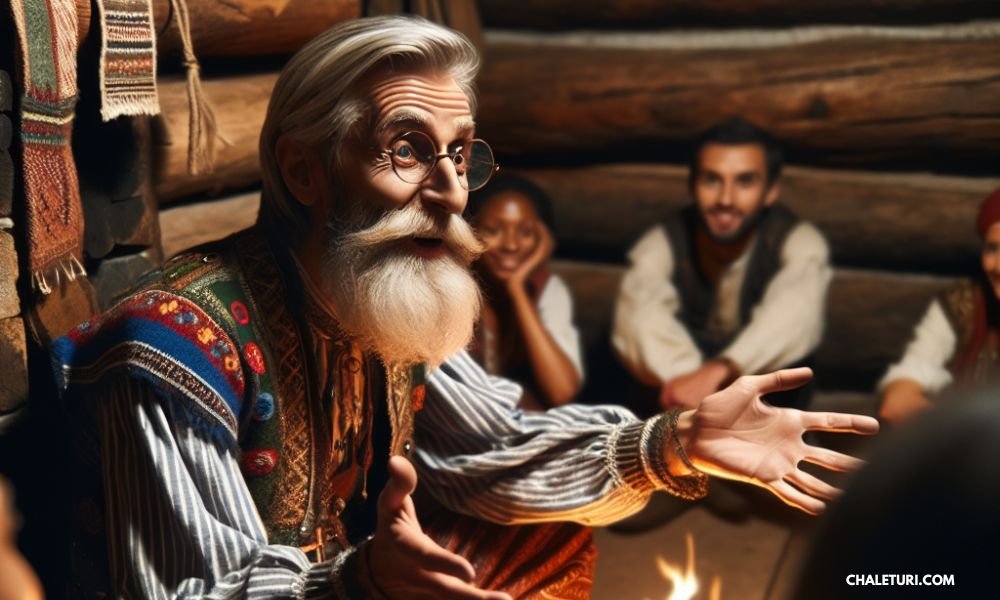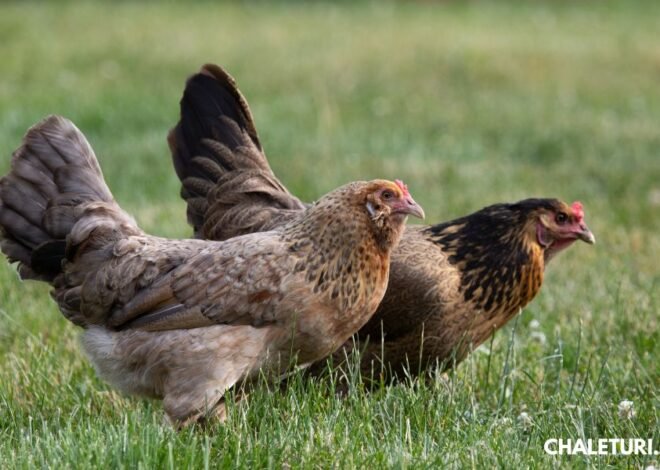From the past to the present, one can conclude that storytelling is a universal aspect that bonds people in diverse ways regardless of time and culture. In the ocean filled with entangled narratives and cast, one factor remains a sad secondary concern: the very core of storytelling—storytelling physically. These two issues are helpful to the storytellers in that they help them appreciate the contribution of the flesh or physicality in narrative forms and their effectiveness. This blog post will focus on why one should pay attention to character physicality in telling stories and how this would improve the narrative and the audience’s perspective on the story and the characters.
Overview of Storytelling and Physicality
Human physicality, for one, is extremely large. This can be portrayed in terms of how the people appear, how they interact with their surroundings, and how they communicate. Digging these aspects is very important for a storyteller toto build a heightened sense of immersion. It is easy to imagine a character of a broad chest being a strong person while equally easy to see why a shrinking stature character would veer towards gloom or even ill feeling.
Let’s say a character has their head held high as a way of showing that he or she is self-assured. Just as the shoulders’ bipedal angle stability bearing downwards suggests tiredness and passivity or unfulfilled expectations, such examples make it relatively more accessible for a storyteller to make the characters come to life and, more so, make them come alive emotionally.
Importance of Addressing the Flesh in Narratives
This is not the ideal context to discuss the idea of flesh in narration, but it comes with reasons. As much as it helps make the story more artistic and realistic, it also helps inspire emotions and the dynamics of the story. When characters are introduced, the narrators can tell the audience the feelings of the characters without emotions in the story and provide and explain ways of character behavior.
Moreover, fleshing allows them to deal with the issues of identity crisis, delicacy and maneness. A storyteller would be able to look at the problems in a certain way that would offend people because of the following of the characters with regards to the norms of the society.
The Role of Physicality in Storytelling
Understanding Human Physicality
Human physicality, for one, is extremely large. This can be portrayed in terms of how people appear, how they interact with their surroundings, and how they communicate. Digging these aspects is very important for a storyteller in order to build a heightened sense of immersion. It is easy to imagine a character with a broad chest being a strong person, while equally easy to see why a character of a shrinking stature would veer towards gloom or even ill feeling.
Let’s say a character holds his or her head high to show that he or she is self-assured, just as the shoulders’ bipedal angle stability bearing downwards suggests tiredness, passivity, or unfulfilled expectations. Such examples make it relatively easier for a storyteller to not only bring the characters to life but, more so, make them come alive emotionally.
Physical Traits as Narrative Tools
Physical traits are one of the most effective narrative techniques known to practicing writers, and they can consistently improve the story in every writer’s possession. It may assist in swift communication of an idea to the readers without the need for long unnecessary paragraphs informing the readers. A nasty scar one of the characters possesses may signify a particular incident in their lifetime.
Simultaneously, such physical aspects supplement the suggestion of the ethical aspect of the narrated story. A situation where a weak character becomes an embodiment of muscle mass can be regarded as development for the good in this story.
Impact of Body Language on Stories
Nonverbal communication is very much present in all forms of art, albeit verbal art. For example, in fiction, along with the spoken words, nonverbal communication, which includes facial expressions, posture, illustration, and even animations, serves as tools to enhance the characters and contain their feelings. Nodding one’s head in agreement, evading the eyes of the other or with them, and clasping one’s hand broadly speaks to the people’s purpose and connections.
Integrating body motion into core structuring allows exciting drama narrators to thrill the viewers. This is especially critical because it focuses on the ‘unwritten’ aspect, which improves the realism in character interactions and adds some depth to the storyline.
Character Development Through Physicality
Depth of Characters and Their Physical Traits
The physical features of the character are also very important since they tend to define or enrich the development of the particular character. These attributes may help the reader portray the internal, external, emotional, and historical elements of the said people and hence relate to them. The way a particular character acts or looks may be different from all the rest and are more likely to stick as appealing and worth recalling.
It is one of the activities that require a certain concentration on both the inner self and the outer shell of the personalities. Since there is interaction between the different appearance traits and the character growing the impact of appearance bliss may be adopted in creating the character.
Metaphors and Symbolic Representations
Metaphor and symbolism are some of the most durable plot tools. They use human anatomy to disguise and convey ideas of a philosophical nature. A character’s looks can be used to facilitate the development of the themes of the cause of the internal processes and changes, wants, and problems in the story.
The second character has a specific change, which can be noted in his or her makeup as events unfold in the story. This change can also serve as an icon or a representative of the different changes in these characters’ outlooks, resulting in themes of redemption or self-discovery. Physical characteristics are known to encapsulate ideas that are otherwise of high order and, therefore, difficult to convey to the extent that the audiences’ interests are aroused.
Influence of Physical Changes on Character Arcs
Nevertheless, physical change is also a feature of some textual works, and the same holds true for characters in most films. Such arcs can propel the story to a higher level or build tension. Even an external change made on a character to embrace closure or defense affects their development as well as the world center of action.
In such situations, for instance, if one character is blind, he may experience sounds more acutely or smells more profoundly than others, or many such tactile aromas will increase his perspective of the world. Similarly, physical changes help the characters to a large extent and advance the storyline so that the readers do not lose interest.
Narrative Techniques Involving Physicality
Showing vs. Telling in Storytelling
The clarification that “showing is better than telling” is an axiom in narration. Rather than telling readers who a character is, the writers can depict a character’s physicality and create some weighty scenes to which the readers can connect. This method enables the audience to understand and grasp the story’s spirit as they can come up with their own inferences from the plot.
For example, instead of only saying that the character is nervous, the storyteller may say that the character has trembling hands, glaring eyes, etc. Such scenarios help readers create mental pictures of the scenes and thus feel more involved in the story.
Use of Sensory Details to Enhance Narratives
Readership can also be a key element in every story through construction. Imagination, sound, textures, tastes, and odors are the five major dimensions that a story can appeal to; hence, such aspects can create vivid landscapes for the readers and immerse them in the story more.
Stories that deal with the specific activities of the body can help create appropriate scenes. The smell of wet soil touches the heart,, and so does the sound of leaves crackling under an individual’s feet; such elements can increase readers’ interaction withwith the narrative.
Balancing Dialogue and Physical Interactions
In any story, there exists an equilibrium, especially between the narration and the actions. The actions primarily communicate relational aspects of the characters, while the dialogue mainly shares information and moves the plot. These aspects forge a combination of events that engage the target audience.
Reinforcing talk with physical gestures as desired in interactions is also beneficial to character interactions. Placing a comforting hand on someone’s shoulder or giving a gentle push may give an impression that words could never convey, thus enhancing the story.
Ethical Considerations in Representing the Flesh
Respecting Diversity and Avoiding Stereotypes
It is said that with great power comes great responsibility, and the same can be said about the great power of storytelling. Focusing on a character’s traits and physical appearance, for example, selecting one’s ethnic background, Cannot, and must not, follow societal templates. But then again, authors in such situations Try to as well Phoenix so that to capture and represent, as closely as possible, the most various types of body, outlooking, and skills.
Bending the rules and saying ‘no more’ to conventionality further nurtures the storying skills of the narrators by making them consider the kinds of stories that people from different regions and cultures will most enjoy. In that way, one accepts and respects other people, enhancing the narrative listening intercourse of ingesting the representations.
The Impact of Body Representations on Audiences
Body images have the potential of altering the way audiences perceive both their bodies and the bodies of others, often in ways they would never have conceived. Body positivity books are the ones that help change people’s perception of their bodies, so they love themselves. Alternatively, negative body images and body representation impact high damage levels of stereotype imposition on people’s self as well as societal level.
They create a society. Narratives have the potential to diverge from the sociocultural norms prevalent in the society in which they are created. Such people are well aware of the implications of the illustrations and their lettering for the society and would thus be interested in contributing to its more amicable and kinder version.
Strategies for Ethical Storytelling
Stories, like any other spinning a yarn, have their essence in the writers’ threat or how this impacts negatively depending on the character. Storytellers need to look for what is entitled to them through experience, facts, and the people around them.
In addition, working with sensitivity readers or other professionals helps in minimizing biases and making sure that the representations are of sufficient desirability. In relation to ethical limitations, there are certain procedures which have to be followed orally so that the prohibition of the performances of the stories is not expanded.
Education of Storytellers on Physicality
Traditional vs. Modern Approaches
The education of storytellers has developed over time with changes of conscience in society and progress in technology. Traditional methods of story development were more about structures concerning the plot and the characters, while modern techniques highlight more how the body can be used in the narrative.
In modern education on storytelling, the authors cancan engage their audience by using variety and sensitivity of details as well as the physical morale of the characters. Storytellers can also tackle effectively that will appeal to people in today’s world with the combination of the traditional and the present day’s methods of story construction.
Interdisciplinary Insights from Psychology and Theater
An interdisciplinary approach, embracing more elements like psychology and theater can be beneficial to storytellers in as far as understanding physicality is concerned. With the aid of psychology, concepts in human behavior, gestures and other facial expressions may be utilized thus improving the interactions and incidents between characters.
Contrarily, theater highlights the aspects of performance where physicality and character acting are critical. With the help of these disciplines, effective story-building that is emotionally compelling and physically captivating will be possible.
Curriculum Focus on Physical Descriptions
The storytelling curricula need to adopt a pedagogy rich in physical descriptions to prepare the storytellers for creating the physicality needed. Workshops and exercises that stress sensory details, body language, and symbolism, can help these wannabe storytellers create believable and immersive narratives.
The best storytellers are skilled at creating physicality in their narrations, and this, as they combine the two worlds, creates stunning and attractive stories for the audience.
Summary of Physicality’s Role in Storytelling
Analyzing the physical aspects of storytelling facilitates understanding the characters, their roles, and how the viewers seize the story. If the creator uses some physical properties, movements, and other things that are perceptible, people would be at ease with ‘feeling’ instead of thinking.
Ethics, however, and the multifacetedness of the story remit allow storymakers to create the much-coveted diversity without compromising the spirit of their works. Tellers can also nurture their oratorical skills by using physicality and body language and maintain constructive interactions with their audience.
The Future of Storytelling Education and Physicality
Two provisions are made above: multidimensionality and interesting pedagogical impacts. All performing arts, including the profession of storytellers, must evolve and incorporate other aspects during social upheaval. To avoid digressing and always be in the right context, we, or more especially our readers, can be assured that there will always be a need for the body in our narrative.
These new storytellers are concerned with capturing/exploring the numerous possibilities of the body as an element within the architecture of their works. Their goal is to create stories that are not just read but awaken passengers’ imaginations and the entire community.




